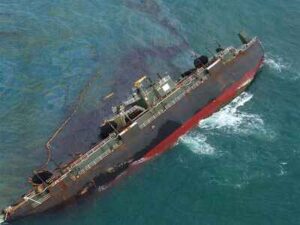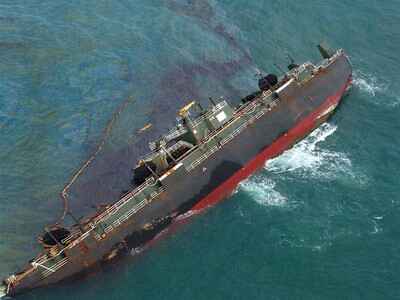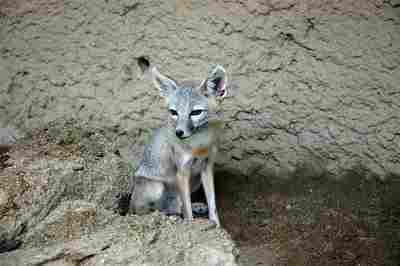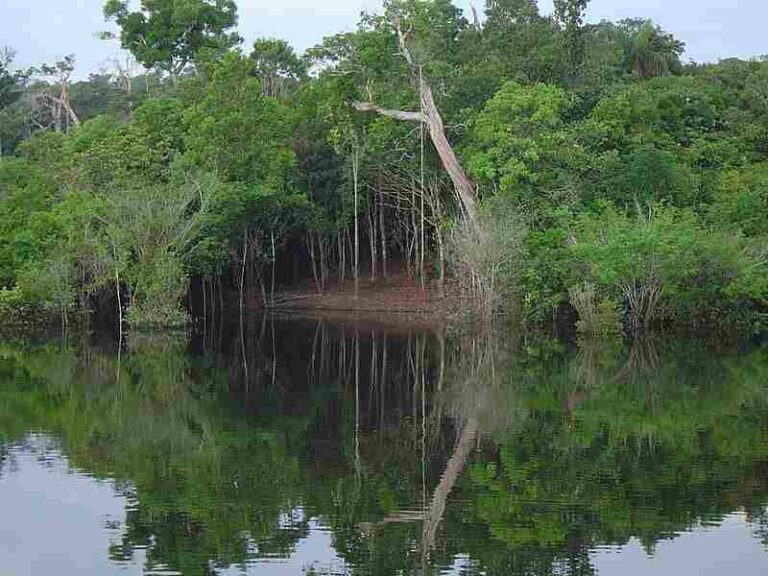5 Sources of Water Pollution and Characteristics Explained
Sources of water pollution are; chemical industries, wastewater treatment plants, sewage management systems, oil vessels, and agricultural lands.
This article discusses the sources of water pollution and their characteristics, as follows;
1). Chemical Industries (as one of the Sources of Water Pollution)
Environmental impacts of chemical industries (and the chemical industry as an economic sector) are significant. Among these are soil, water and air pollution.
The chemical industry pollutes water by emitting toxic chemicals and manufacturing-byproducts into the environment, in the course of its operations.
These toxins are assimilated into aquatic ecosystems (both freshwater and marine) either as a result of absorption of airborne materials, or by the deliberate release of inadequately-treated chemical effluents into water bodies.
As a source of water pollution, the chemical industry is in fact very versatile in terns of its geographic and contextual coverage.
Asides pollutants released directly from industrial facilities and chemicals themselves, other related processes to chemical industries, can cause significant levels and scales of water pollution and general environmental degradation.
Sources of chemical water pollutants include manufacturing processes, gaseous emissions and industrial wastewater. Chemical industries that can contribute significantly to water pollution include pesticide and fertilizer-manufacturing industries, as well as petrochemical facilities.
It must be noted that chemical pollution is one of the main types of water pollution, and encompasses agriculture-related degradation as well.

2). Wastewater Treatment Plants
A wastewater treatment plant is a facility or system used in industrial or domestic contexts, for the reduction of toxins in wastewater before the same is released into the ecosystem.
Problems associated with wastewater treatment plants are; suitability of scale, energy resource-consumption, sustainability challenges, and pollution risk. Like pollution, many of these are environmental issues, that also have potential socioeconomic implications.
The types of pollution caused by a wastewater treatment plant are mainly chemical and organic pollutions.
With regards to the degradation of water resources, wastewater treatment plants can reduce water quality in large natural or artificial reserves, provided they are not effectively isolated from the environment. Under such conditions, leakage or discharge of untreated (or inadequately-treated) wastewater can occur, alongside the transmission of pollutants.
Water pollutants in wastewater treatment plants include pathogenic microbes (like bacteria, fungi and viruses [3]), sediments, nutrients, disinfectant chemicals, thermal energy and degradable biomass.
Biodegradation of organic materials in wastewater is an oxygen-consuming process that can drastically reduce the amount of dissolved oxygen (DO) available in water bodies. This poses a threat to the survival of aquatic animals and plants, which use oxygen for their metabolism.
Sources of industrial wastewater that can cause water pollution are; mines, steel plants, chemical manufacturing facilities, power plants, pharmaceutical manufacturing facilities and petroleum refineries.
3). Sewage Management Systems (as one of the Sources of Water Pollution)
A sewage management system is a source of water pollution by reason of the (potential) leakage and percolation of sewage sludge into groundwater aquifers or surface water reserves.
Sewage systems contribute to water pollution when they are not effectively isolated from the soil, water table and water bodies. This is also the case with chemical industries, landfills and wastewater treatment systems.
As a matter of fact, water pollutants from these different sources are often similar, including nutrients and biodegradation products.
Sources of sewage wastewater or sludge include residential buildings, livestock farms, offices, commercial and industrial buildings. All facilities equipped to collect organic waste can serve as sources of sewage.
Sewage affects water bodies by altering their color, odor, chemical and microbial composition, as well as the concentration of essential gases and toxic elements.
In urban areas, sewage pollution of water is often a major issue due to challenges of infrastructure, overpopulation, and environmental regulation [2]. Here, water pollution by sewage may occur under a variety of conditions, including as a result of flooding and polluted stormwater runoff.
4). Oil Vessels
An important form of water pollution in oceans is that which is caused by oil spillage; and can be referred to as oil water pollution.
The main source of oil water pollution is maritime vessels and facilities including ships and offshore oil rigs.
Oil vessels or tankers can cause water pollution when they spill or leak their contents into the ocean, in transit. This form of water pollution is not very uncommon in areas where offshore oil and gas activities are rampant.
Water pollution by oil vessels is a major cause of biodiversity loss and environmental degradation in coastal regions. It is also often difficult and expensive to resolve through remediation.
Oil spills in water are usually accidental, induced by physical collision, structural defects, and in some cases; by natural hazards like hurricanes.
The image below shows a marine oil spill (involving about 5 million gallons of dense slurry oil) where capsizing of the vessel is caused by Hurricane Rita, in 2005.

5). Agricultural Lands (as one of the Sources of Water Pollution)
As an industrial sector, and an economic practice; agriculture is one of the biggest and most common causes of water pollution. In line with this, improperly-managed agricultural lands act as major sources of water pollution, by actively yielding significant amounts of chemical and organic pollutants into the environment.
The main source of water pollution in agriculture is the farmland from which sediments and agricultural effluents are transported into water reserves.
Agricultural effluents are fluids carrying waste from agricultural livestock, crops and processes. Examples of these agricultural effluents are; livestock manure-slurry; crop processing waste, and remnant from feeders and antibiotic dispensers.
On agricultural lands, unsustainable practices like overgrazing, over-tillage and excessive use of chemical fertilizers, herbicides and pesticides, result in loose sediments carrying high concentrations of toxic materials that are vulnerable to the impact of erosional agents that transport them as runoff and deposit them in lakes, rivers, streams and oceans.
Sediments and chemicals flowing from agricultural lands into water bodies can cause an excessive rise in nutrient concentration levels, which in turn leads to rapid algal growth, called eutrophication [1]. This makes the water unusable for domestic purposes, and can lead to massive fish-kills due to toxification and oxygen deficiency.
The prevention of water pollution from agricultural land can be achieved through sustainable farming, with practices like composting, conservation tillage, and organic agriculture.
Conclusion
Sources of water pollution are;
1. Chemical Industries
2. Wastewater Treatment Plants
3. Sewage Management Systems
4. Oil Vessels
5. Agricultural Lands
References
1). Haque, S. E. (2021). "How Effective Are Existing Phosphorus Management Strategies in Mitigating Surface Water Quality Problems in the U.S.?" Sustainability, MDPI, vol. 13(12), pages 1-13, June. Available at: https://ideas.repec.org/a/gam/jsusta/v13y2021i12p6565-d571455.html. (Accessed 28 April 2023).
2). Kimani-Murage, E. W.; Ngindu, A. M. (2007). "Quality of water the slum dwellers use: the case of a Kenyan slum." J Urban Health. 2007 Nov;84(6):829-38. Available at: https://doi.org/10.1007/s11524-007-9199-x. (Accessed 28 April 2023).
3). Rajasulochana, P.; Preethy, V. (2016). "Comparison on efficiency of various techniques in treatment of waste and sewage water – A comprehensive review." Resource-Efficient Technologies, Volume 2, Issue 4, December 2016, Pages 175-184. (Accessed 28 April 2023).





